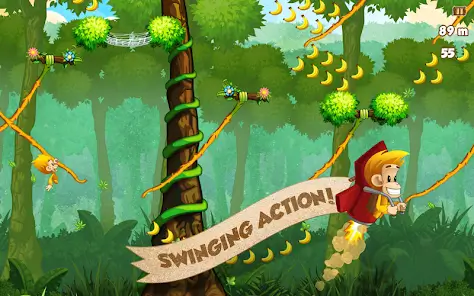Swing games are a popular genre of mobile games that involve swinging, flinging, or slingshot mechanics. These physics-based games require players to pull back and release objects with the right timing and trajectory to hit targets or solve puzzles. Some of the most popular examples of swing games include Angry Birds, Cut the Rope, Hocus, Pocus, Sling Drift, Fling Fighters, and many more.
This article will provide an overview of swing games, their history and evolution, what makes them fun and addicting, design considerations for developers, and future opportunities in the genre.
History and Evolution of Swing Games
Swing gameplay has its origins in the early physics games of the 2000s, particularly desktop titles like Crush the Castle and Ragdoll Cannon. These games involved using medieval weapons like trebuchets to fling projectiles at obstacles. The launch of Apple’s App Store in 2008 and touchscreen devices enabled the adaptation of this gameplay style to mobiles. Early swing titles like Parachute Ninja pioneered simple one-touch controls.
Angry Birds by Rovio in 2009 then took the genre mainstream and inspired countless clones. It demonstrated the appeal of using a slingshot instead of medieval weapons and using vibrant, cartoony graphics. As devices became more advanced, swing games incorporated more complex physics, destructible environments, and real-world physics. The rope/cloth-cutting gameplay of Cut the Rope in 2010 brought more puzzles beyond just hitting targets. As the genre matured and competitive multiplayer grew, titles like Fling Fighters and Sling Drift added PvP gameplay and leaderboards. Today, innovative indie developers like Gamedot continue pushing the genre forward.
Fun and Engaging Gameplay
There are several reasons why swing games resonate with mobile gamers:
– Satisfying feeling of pulling back and flinging objects
– Physics-based trajectory and unpredictable outcomes
– Simple, intuitive one-touch or tap controls
– Quick replayability and games played in short sessions
– Bright, vibrant graphics and characters
– Progression through challenging physics puzzles or levels
– Destructible environments and visually appealing destruction
The controls give players a very tactile feeling, making gameplay immersive. The physics leads to emergent outcomes, giving levels and puzzles replay value. being able to retry levels easily caters well to mobile gaming in short bursts. Visually appealing graphics and characters additionally amplify the satisfying feeling of gameplay. As players progress, they master timing and trajectories to solve challenging puzzles.
Design Considerations of Swing Games
Some key aspects developers should focus on when designing a hit swing game include:
– Refined one-touch control scheme
– Balanced level progression and difficulty curve
– Physics parameters for trajectory, gravity, elasticity, etc
– Destructible environment elements and visual/audio feedback
– Interesting level goals beyond just destruction
– Context and settings to inspire unique game objects
– Character designs/narratives that resonate
Retention revolves around achieving that sweet spot between frustration and reward. Physics parameters allow developers to shape the right challenge, skill progression, and unpredictability. Audio, visuals, and theming complement the core mechanics to make the experience visceral and keep players engaged.
Future Opportunities
As devices continue advancing, here are some directions that could push swing games further:
– Incorporating augmented reality with real-life physics
– Leveraging new haptics/vibration features
– Using sensor/gyroscope input for more control angles
– Dynamic environment reactions powered by mobile chipsets
– Multiplayer integration and new competition formats
– Exploring underutilized settings like swing games in space
The simplicity and casual nature of swing games make them widely accessible to all types of gamers. Their development is also more manageable for indie studios compared to more complex 3D games. This means the genre still has enormous room for reinvention and growth in the coming years if developers tap into new mobile capabilities.
Conclusion
Swing may seem like a simple genre, but has enormous range for creativity and challenge. As mobile devices continue advancing, there are still so many untapped ideas developers can explore by using new hardware features. The satisfying core interaction, family-friendly appeal, and adaptability of swing games mean they will continue gripping mobile gamers for years to come.
Their instinctual one-touch controls and physics-driven unpredictability craft reliably fun and rewarding experiences no matter how advanced the visuals or theming becomes. For indie developers, swing games represent an exciting and viable genre with longevity across casual and hardcore audiences alike.
